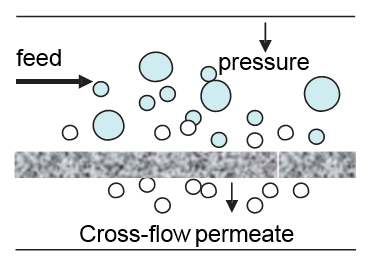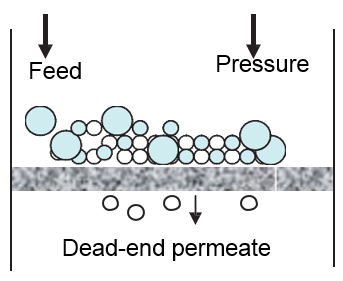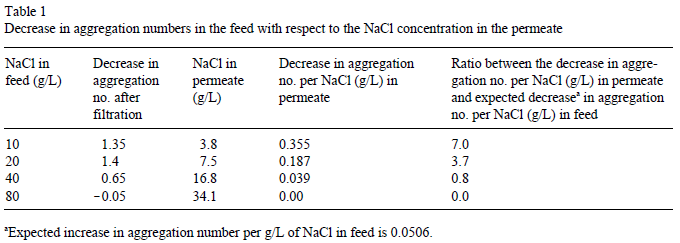Historical Background
Humans have since ancient times looked for ways to purify the water they used thereby increasing its safety. One of the ancient methods used to achieve purity is filtration. This method has been used for water treatment purposes for centuries and as far back as the 1800s, the English philosopher Sir Francis Bacon was using filtration for water purification.
By 1804, the Scottish town of Praisley had an operational water filtration scheme in place. The successes of the English schemes led to Paris commissioning its own large water treatment plan in 1806. The River Seine was to be the source of water for this project. To carry out the filtration process, the water in the Paris plant was held motionless for 12 hours before filtration began. The settled water was then forced through sponge pre-filters. These filters, which were made up of sand and charcoal, were replenished on an hourly basis.
By the late 19th century, it was deduced that filtration not only removed unwanted particles from water, but it was also efficient in removing deadly germs. This recognition of the importance of filtration led to a rapid development in sand filters. These filters further reduced the bacteria content and the cloudiness of water. Between 1920 and 1940, chlorination and filtration began to be used in water treatment. The two methods effectively eliminated epidemics caused by water-borne diseases in major cities.
During these years in the early 20th century, a number of methods such as dissolved air flotation and membrane filters were created. The solid-contact clarifies and floc-blanked sedimentation procedures were developed during the same period. In the 1940s, significant progress was made in desalination technology. Eriksson (1988) explains that the impetus for desalination development came from the need to provide fresh water supplies to troops engaged in arid regions during the Second World War.
The filtration process is still being used in water treatment processes today. The process has evolved and is today more refined than it was in previous centuries. There is a better understanding of the physical and chemical interactions that take place through the filtration process. Technological advances have made it possible to measure particles in minute units such as microns.
Compounds can also be measured in microscopic unites such as parts per billion or even trillion. There are regulations in place that determine how the by-products of the disinfecting processes are controlled. This has led to modern membrane filters purifying water at the same level or even better than conventional water treatment methods. Nanofiltration has emerged as the most recent membrane filtration technology in use.
Peter Eriksson, who was with the Minneapolis-based FilmTec Corporation, was the first author to use the term “Nanofiltration”. Eriksson went on to provide the first broad overview of this process and provided examples of application of Nanofiltration (NF) (Eriksson, 1988). He defined this process as a membrane separation process driven by pressure acting on the lower end of ultrafiltration (UF) and the upper end of reverse osmosis (RO). The process has a low rejection of salts containing monovalent anions and non-ionised organics while it has a high reject of salts containing divalent and multivalent ions and with a molecular weight above 150.
The first trial for the commercial scale application of NF occurred in 1991. In this year, the Vivendi and Syndicat des EauxD’ile de France (SEDIF) corporation carried out a trial of the NF-membrane development by FIlmTec. This initial project was to treat water for supply to a population of 5,00o in the nearby communities.
The success of this prototype unit led to future collaborations between SEDIF and FilmTech. With permission from the French government, more NF-membrane treatment systems were installed in the country (Fane, 1996). This technology has continued to spread in France with 10,000 NF-membrane water treatment systems being available in the country today. The prevalence of NF-membranes in this European nation proves that the technology can be implemented for large-scale urban water treatment projects.
There have been numerous studies on how this membrane process can be further improved (Gould, 1995). Redondo and Lanari (1997) carried out extensive studies on membrane selection to determine the most appropriate membranes for use under different feed-water conditions in Europe. This increased research has led to the development and production of a wide range of NF products by many manufacturers leading to greater choice for users (Peters, 1998).
The popularity of membrane based treatment plants has grown over the years. Each year, municipalities from all over the world commission for such plants. However, challenges exist when implementing NF-membrane water treatment systems since the water composition differs from region to region. As such, membranes that are suited to particular water compositions have to be produced for use in various regions. The FilmTech Company has expanded its range of NF products and it now includes the NF90-400, NF270-400 and NF200-400 membranes, which have improved features compared to the previous models (Afonso & de Pinho, 2000).
Membrane Processes
A membrane is a material that separates two sections, serving to allow certain materials through while it bars the rest. Through the membrane process, a single feed stream is divided into two streams made up of the retentate and permeate. The retentate is the material that is not allowed through the membrane while the permeate is on the outlet stream that is allowed to pass. The permeate is characterized by having a lower concentration of the entities barred by the membrane while the retentate has the higher concentration of entities.
For the feed stream to be selectively divided in the membrane process, energy has to be used. This energy applied in the unit operation is referred to as the driving force. Membrane processes can be classified based on the driving force. The various driving forces are pressure gradient, concentration gradient, temperature gradient, or electrical potential gradient (Mulder, 1996).
Nanofiltration methods
Cross-flow method
In the cross-flow method, the feed stream is made to flow parallel to the surface of the membrane. This has the effect of decreasing the frequency of fouling or formation of cakes on the surface of the membrane. The efficiency of the membrane is therefore increased due to the longer sustained fluxes made possible by the cross-flow mode.

Dead-end method
In this mode, the input stream is made to run at right angles with the surface of the membrane. T

his has the effect of increasing the retentate formation on the surface of the membrane. The frequency of fouling or formation of cakes on the surface of the membrane increases due to pore clogging (Grandison et al., 2002).
Workability of membrane
Fouling
Concentration polarization (CP) is a condition that occurs during NF process when the membrane rejects the solute. The NF process works by having water and the entities transported through the membrane. The larger entities contained in the water solution are retained on the feed side while the smaller ones filter through since their size is smaller than that of the membrane’s pores. As the retained entities accumulate on the membrane surface and its interface, their concentration reaches a level higher than the bulk stream’s leading to reverse diffusion. Concentration polarization is essentially the entity accumulation at the interface.
Fouling is the deposition of solute or particulate within the membrane or on its surface. This process is irreversible or very hard to reverse. It causes a loss of flux change over time as well as solute rejection due to CP. The fouling problem combined with flux decline leads to higher expenses being incurred in running the filtration system.
A number of entities act as foulants in the NF process. They include suspended solutes, metal oxides, organic matter, inorganic scalants, and biological material (Osta & Bakheet Sr., 1987). Fouling occurs in a number of discrete phases that occur due to concentration polarization, pore blocking, and adsorption of hydrophobic species (Flemming & Schaule, 1988).
In the pore blocking fouling phenomenon, the pores become clogged due to species smaller than their size being adsorbed onto their inner walls or when chemical cleaning in place (CIP) does not effectively remove the adsorbed material from the inside of the pores (van der Graaf & Roorda, 2000). Ineffective CIP might result in irreversible fouling of the membrane.
In an NF system, fouling control is crucial to the efficiency of the filtration process. If it is not controlled, it leads to increased energy consumption, decreased salt rejection, and the need for high cleaning frequency. The lifespan of the membrane may be shortened significantly by frequent cleaning.

Aggregation Study
General view
The main problem encountered during the dyeing process is the Aggregation of the dyes. Dye aggregation is the self-association between dyes in the solution. This self-association is an important event where the molecules of ions of the dye take part. Aggregation typically occurs when dye molecules are combined in aqueous solutions and the degree of these aggregation depends on factors such as dye molecule size and dye molecule concentration. Different forms of aggregates might be formed including diametric, trimetric, and others depending on the specific attributes of the dyes.
Promoting factors on aggregation
A number of investigations have been carried out on the dye aggregation phenomenon (Shore, 1995). This feature, which is a unique characteristic of dyes, is promoted by the higher concentration of dyes or salts. Investigations reveal that the level of dye aggregation increases with the increase in concentration of dye of Sodium Chloride (Bird & Boston, 1975). Shore (1995) explains that Aggregation is encouraged when the relative molecular mass is higher than the ionic group content. As such, hydrolysed dye had greater aggregation compared with non-hydrolysed dye due to its high ration of relative molecular mass to ionic group content.
In addition to ionic strength and dye concentration, aggregation also increases when alkyl chains are introduced into the dye. The reason for this is that the alkyl chains cause hydrophobic interaction to increase. On the other hand, introduction of ionic solubilising groups and organic solvents decreases aggregation. Currently, the hydrophobic effect does not play a major role in aggregation modification. Hihara et al., (2000) surmise that the reduced role of the hydrophobic effect is due to the limited knowledge on the relationship between dye structures and their reaction in aqueous solutions.
Currently, no comprehensive studies exist on the aggregation behaviour of dyes. No systematic study has been carried out to find out how various dyes behave under varied physical conditions. The preliminary experiments on dyes show that there is high aggregation of dyes when they are mixed with water or cellulosic substrates. The aggregation behaviour of dyes has therefore been investigated when the dyes are in these two forms.
Previous Study for aggregation
Studies reveal that hydrolysed dye has a higher tendency for aggregation, an understandable revelation since ionic groups are also water-soluble groups. As such, the higher their concentration in a dye the less the aggregation tendency. In addition to this, the number of ionic groups represents the number of charged groups in the compound. In this case, the C.I. Reactive Black 5 has four negatively charged groups while the hydrolysed C.I. Reactive Black 5 has two.
In the Nanofiltration experiments where synthetic dye solutions with hydrolysed C.I. Reactive Black 5 and NaCl were placed in the stirred cell, the expected results were that the aggregation numbers would increase. This will occur if accumulating the dye in the rejectant also causes the dye aggregation numbers to increase. However, the observed results were a decrease almost in half in the aggregation number.
In the Nanofiltration experiments, the dye aggregation number rose from 4.05 to 7.6 following an increase in NaCl concentration from 10 to 80g/L. From this observation, it was possible to come up with the following equation for the aggregation behaviour in the feed:
Aggregation number = 0.0506 × NaCl + 3.60 (eq. 4)
Additional experiments were carried out with dyes at different concentrations. The aim of the experiments was to discover the effect of dye concentration on dye aggregation. The results indicated that aggregation numbers increased with increase in dye concentration. For example, a dye concentration increase from 50 to 700mg/L led to the dye aggregation numbers increase from 3 to 4.9. Again, it was assumed that the dye aggregation numbers would rise as the dye concentrated in the rejectant. However, the results were contrary to these expectations. The rejectant aggregation number reduced and in addition to this, the solutions left in the cell after the NF process were stable. No larger aggregates were formed by the solution left in the cell in spite of dye and NaCl being concentrated here.
This introduces the notion that the decrease in the aggregation number after NF is not caused by the dye of the NaCl. This leaves only one possible explanation for the decline, which is the removal of the dye or NaCl from the stirred cell. The experiments show that a decrease in dye concentration from 700 to 500mg/L results in the decline of dye aggregation number from 4.9 to 4.05. This decline is very modest since it is less than 1. As such, the removal of 0.03% of the dye from the cell during NF leading to a 2mg/L dye concentration in the permeate is unlikely to cause the reduction in aggregation number by 1.35. The equation below explains this.
Aggregation number = 0.0035 × dye + 2.34 (eq. 5)
It appears that 2mg/L of dye will cause an increase of 0.007 in aggregation number. It can be hypothesized that the NaCl causes the huge decline in dye aggregation number. Equation 4 shows that the removal of 1g/L of NaCl through NF leads to a decline of 0.0506 in the feed’s aggregation number. However, the removal of 3.8g/L of NaCl causes the significant decline of 1.35 in the aggregation number. This indicates that each g/L of NaCl that passes through the membrane increases the aggregation number by 0.355; a sevenfold increase compared to the aggregation capability in the feed.
From this phenomena, it can be inferred that there is a difference between the NaCl in the permeate and that in the feed. However, further investigation on the matter is needed to provide concrete evidence. It is known that when NaCl is dissolved in water, complete separation of ions does not always occur. This might lead to some ions being attracted to oppositely charged ions for brief periods. Increase in NaCl concentration leads to a decrease in the number of free ions. However, further investigations are needed to provide verification.

One explanation for the dramatic decline in dye aggregation numbers is that a large percentage of NaCl associate crossed the membrane. The remaining NaCl in the cell had a lower ability to promote aggregation leading to the formation of smaller aggregates. The NaCl associates are prevalent at higher salt concentrations. The ability of the NaCl in the feed to promote dye aggregation is not affected by the removal of NaCl aggregates in the permeate. This information is of value in the textile industry since it provides a basis for reusing treated water.
By studying the NF solutions of dye and NaCl, it has been found that NaCl rejection increases after NF when NaCl is concentrated in the stirred cell. At the same time, the aggregation numbers in the cell decreased in spite of an increase in the dye and NaCl concentration in the cell. Observations made showed that the NaCl in the permeate is up to seven times more powerful in promoting dye aggregation compared to the NaCl in the original solution. The potency of the NaCl in the permeate might be because the salt in the permeate might be NaCl associates. This information can be used by textile industries as they try to evaluate the suitability of treated water for reuse.
Effect of dye aggregation on adsorption
Dye ions have a high affinity to self-associate when they are mixed with water to form a solution. When the dye concentration is very low (that is between 10−4–10−6 M), the dyes exist as dimmers. In dimerization, the identical dye molecules combine and this process is complete before further aggregation can take place. The aggregation number of the dimer complex is 2. The aggregation takes place between the already formed dimeric dye units as elaborated in the equations below.
2(Dye) ↔ (Dye)2 (eq. 3)
n(Dye)2 ↔ (Dye)4 + (n − 2)(Dye)2 (eq. 4)
When dyes are acidic in nature, they are referred to as cationic dyes. This is to imply that the chromophoric system exists in the positively charged ion. The acid dyes are adsorbed as sandwich micelles. The average solid phase aggregation number, N, for the cationic dyes is proportional to the cube of the ionic weight of the dye

Surface area available for adsorption (g−1) / surface area of micelle (flat on)
= no. of micelles (g−1)
Adsorption capacity for dye (mg/g) / no. of micelles (g−1)
= average weight of micelle
Average weight of micelle / molecular weight of dye
= aggregation number, N